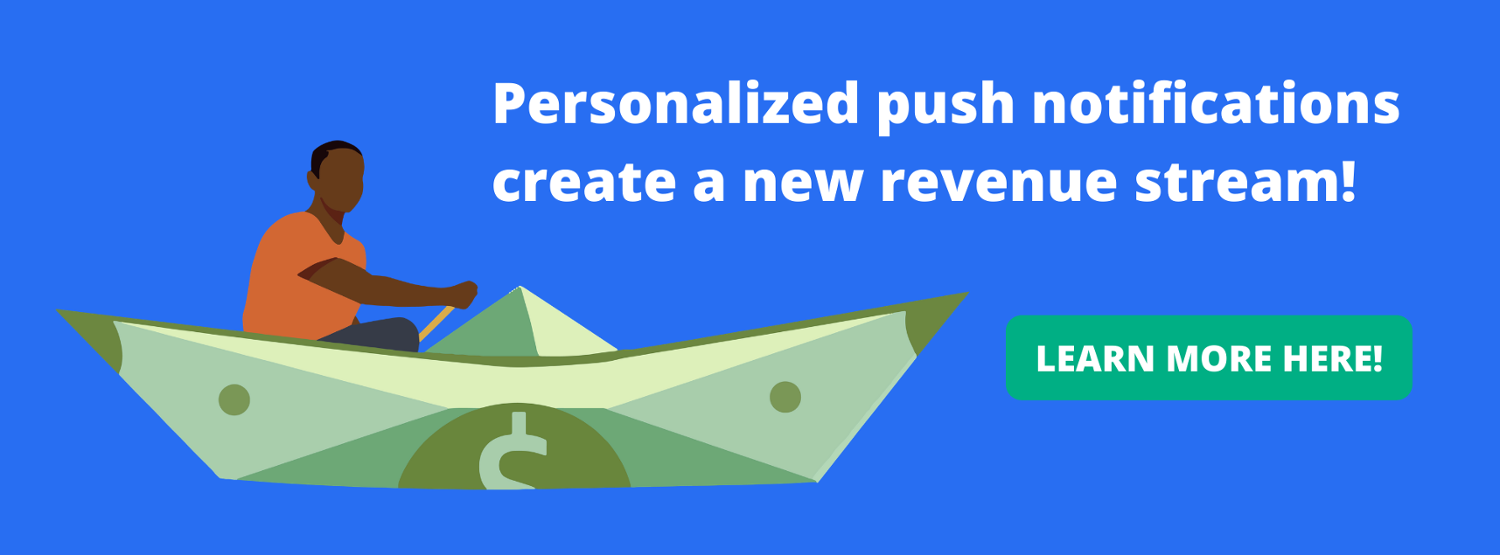Most marketing campaigns run into the problem of user attention. Notifications and scrolling content feeds can do a lot to create engagement, but if you’re looking to grab a larger share of your users’ attention you’ll need to find a way to keep your website at the forefront of their mind. That’s where desktop push notifications come in.
As your application lies unchanging in their browser, they’re likely to either close the browser pane or navigate to another website, reducing the attention they are paying to your product in the process.
Below, we’ll discuss recapturing this user attention via desktop push notifications, and how we can leverage these with other channels in order to increase return visits and better communicate your application’s value.
Traditional notification channels are not sufficient
As the technical competence of the average user grows, they’ll increasingly use multiple applications that operate on a notification basis. While these notifications may be critical for the application’s monetization strategy (such as advertising a flash sale on your products, or announcing a breaking news article), if the user doesn’t see them in a timely fashion then they may as well not exist. While a simple notification scheme that alters page title and artwork to indicate new activity can get you far, most users are no longer looking for these markers of activity.
As the number of mobile devices on the web has grown, this pattern of notification – a push-pull system for attention – has continued to gain traction. Desktop push notifications help ensure that your important notifications are seen by the users as soon as possible after their attention is needed. They work with the user’s web browser, such as Chrome or Firefox, to present a notification window in the user’s operating system, allowing you to gently remind your users of anything that they might need to know. By integrating with established user behavior patterns, such as responding to push notifications, you’ll be able to foster better response rates and increase your click rate simply due to communicating with the customer through their preferred medium.
Potential pitfalls of desktop push notifications
While desktop push notifications do a much better job of garnering user attention than passive UI updates, they are not without their own challenges. First and foremost among these will be the user’s ability to control what they see. While this is without doubt a benefit for harried consumers suffering from information overload, this requires you to be intelligent and considerate in your push promotional strategies; send too many push notifications to your users, and you’re likely to end up with your notifications blocked.
Setting aside user behavior concerns, one of the other challenges faced in a web push notification system is in unifying the notifications with your other communication channels. If your marketing is not consistent across all patterns, your messages will not be able to achieve the same impact. Additionally, tracking can quickly become complex in this system, as each new channel increases the risk of inaccurate user behavior metrics due to the need to integrate the push notification system with your existing platform. Finally, the content itself needs to be engaging to the user, which generally means that it needs to be both unique and relevant to their interests.
Multichannel notifications with MSP
Jeeng, recognizing these challenges in push notification management, has created the Messaging Services Platform (MSP) for Publishers. The MSP allows you to create personalized, user-behavior driven content that can be easily delivered through a multichannel messaging system. MSP integrates email, web, and app-based push notifications into a single platform, allowing you to view the overall success of your campaign in a more accurate manner by giving you the ability to look at your user behavior holistically. MSP for Publishers integrates with your own product to gather information on user behavior, and can surface dynamic, personalized content as needed to keep your users engaged and informed. MSP for Publishers, by taking the headaches out of multichannel push messages, gives you the tools you need to engage more closely and successfully with your user base.
Reclaiming user attention with multichannel notifications
Traditional in-app notification systems, while valuable when the user is viewing your app, are not particularly effective in a mobile-first participation environment. Email notifications help to solve this problem by informing the user in a more active fashion, but these notifications are still subject to information overload on the part of your user, rendering them less effective.
By integrating web push notifications, you can more effectively garner user attention in a timely manner, but you’ll face a number of challenges when working with a now multichannel messaging system. Through leveraging MSP for Publishers, you can break through this attention barrier and get your users coming back to your content more frequently.
If you’re interested in learning more about push notifications, you may find this comprehensive strategy guide interesting!
And feel free to contact us if you’re ready to improve and personalize your current push notification strategy.


